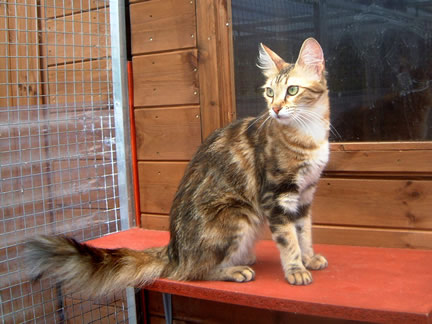Turkish Angora Cats
Like the Turkish Van, the Turkish Angora (Ankara Kedi) has been observed in the Middle-East for centuries, being a natural cat named after the capital of Turkey, Ankara (formerly Angora).
Unlike Turkish Vans, Turkish Angoras can be found in a number of different colours and coat patterns, although to the Turkish people only the white cat is the true Ankara Kedi, the odd-eyed specimens being particularly prized.
The Turkish Angora cat originates from the area around Ankara (Angora) from where it derives its name. Cats from this region were said to be the first longhairs in Europe, brought back by the Vikings as early as the 10th century, and forming the foundation for our modern-day longhairs. Today’s Angora owes its existence to organisations like Ankara Zoo, from where cats were imported into the USA in the late sixties, and thence to Europe.
Turkish Angoras undoubtedly share some common ancestry with Turkish Vans, the two breeds having become polarised by events which have seen the cats become almost extinct in their native Turkey, only to be reborn in America and Western Europe. Today the two breeds are clearly distinct, but there are still many similarities to the extent that in some extreme cases they have been mistaken.
|  |



